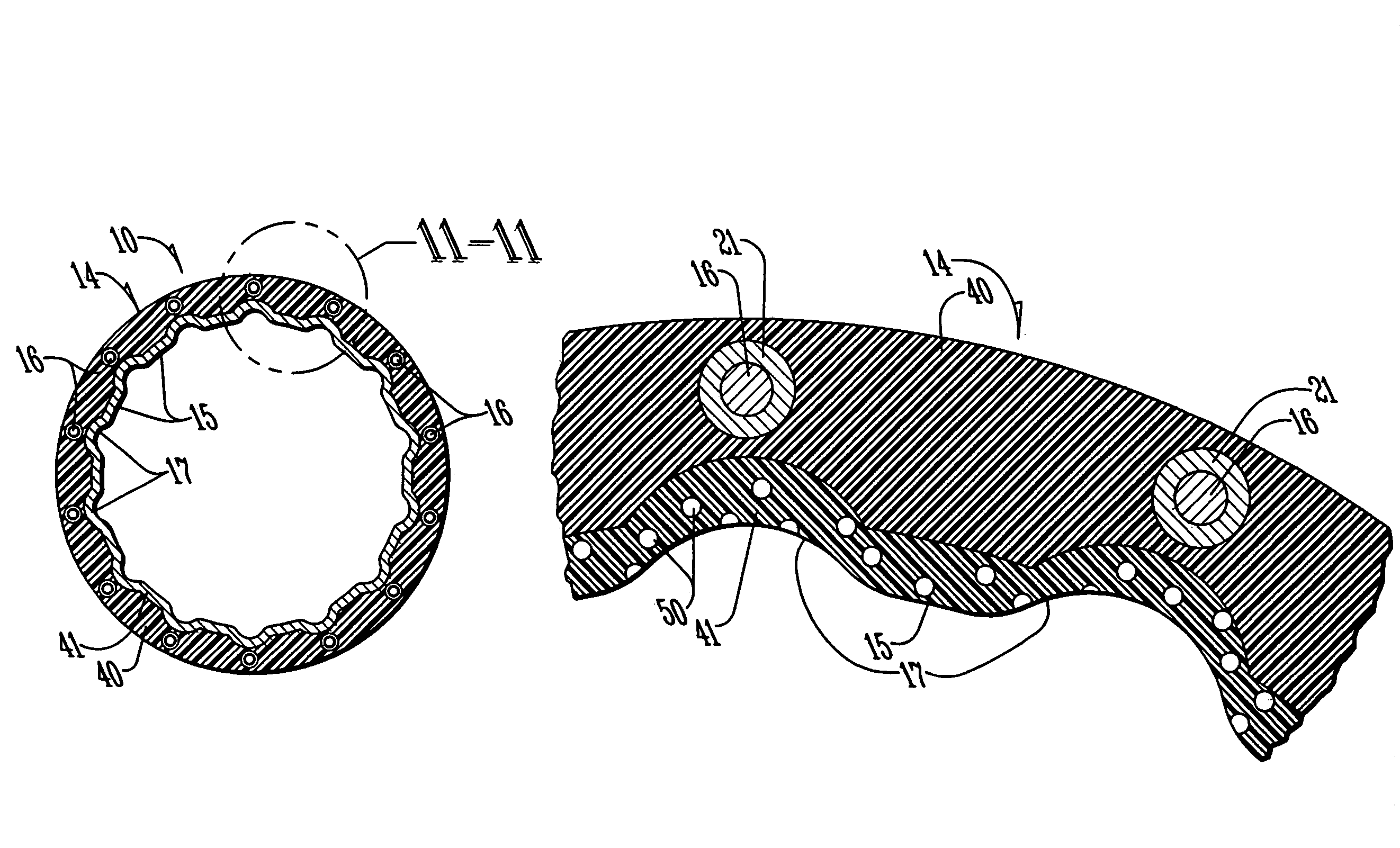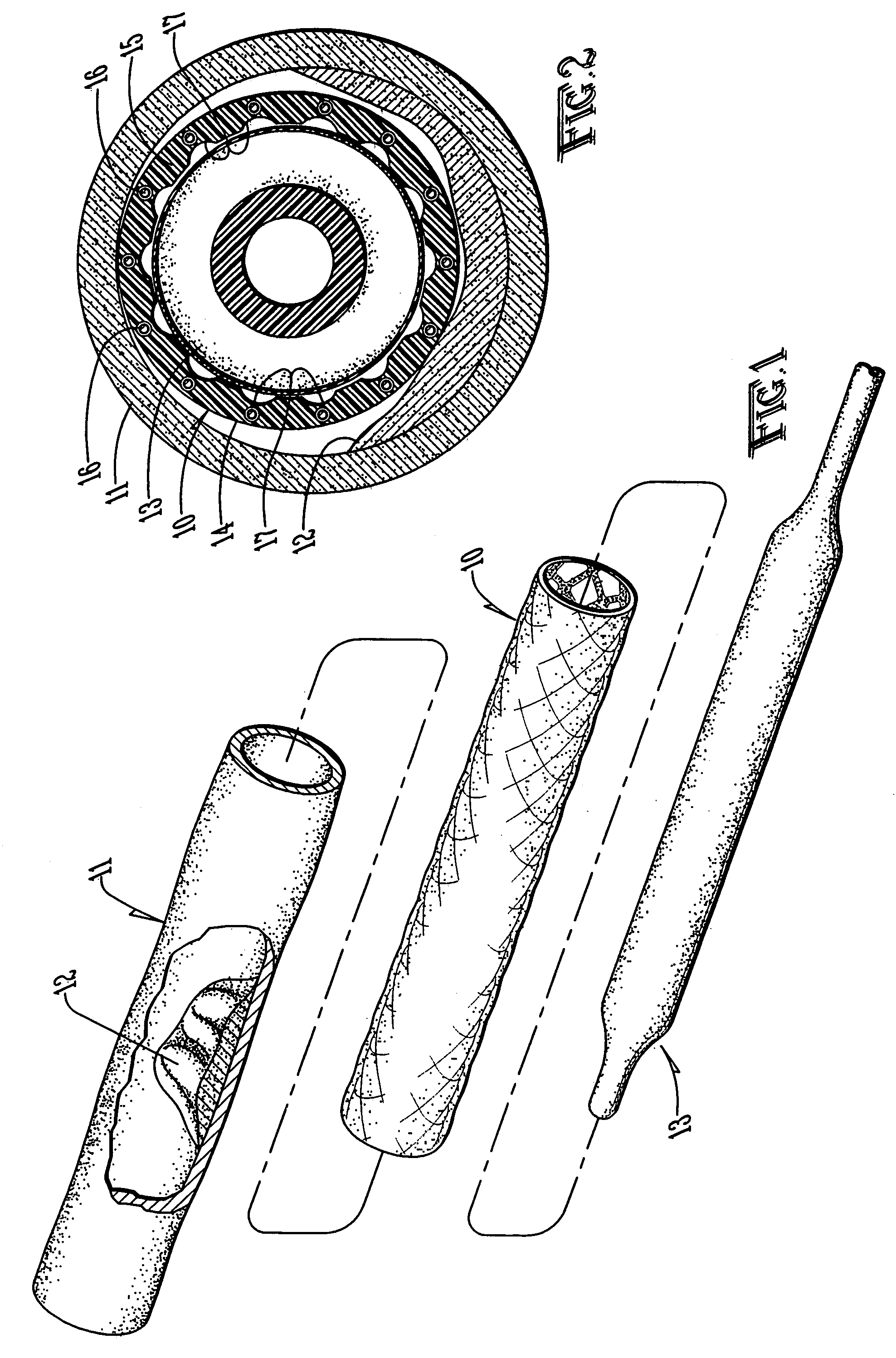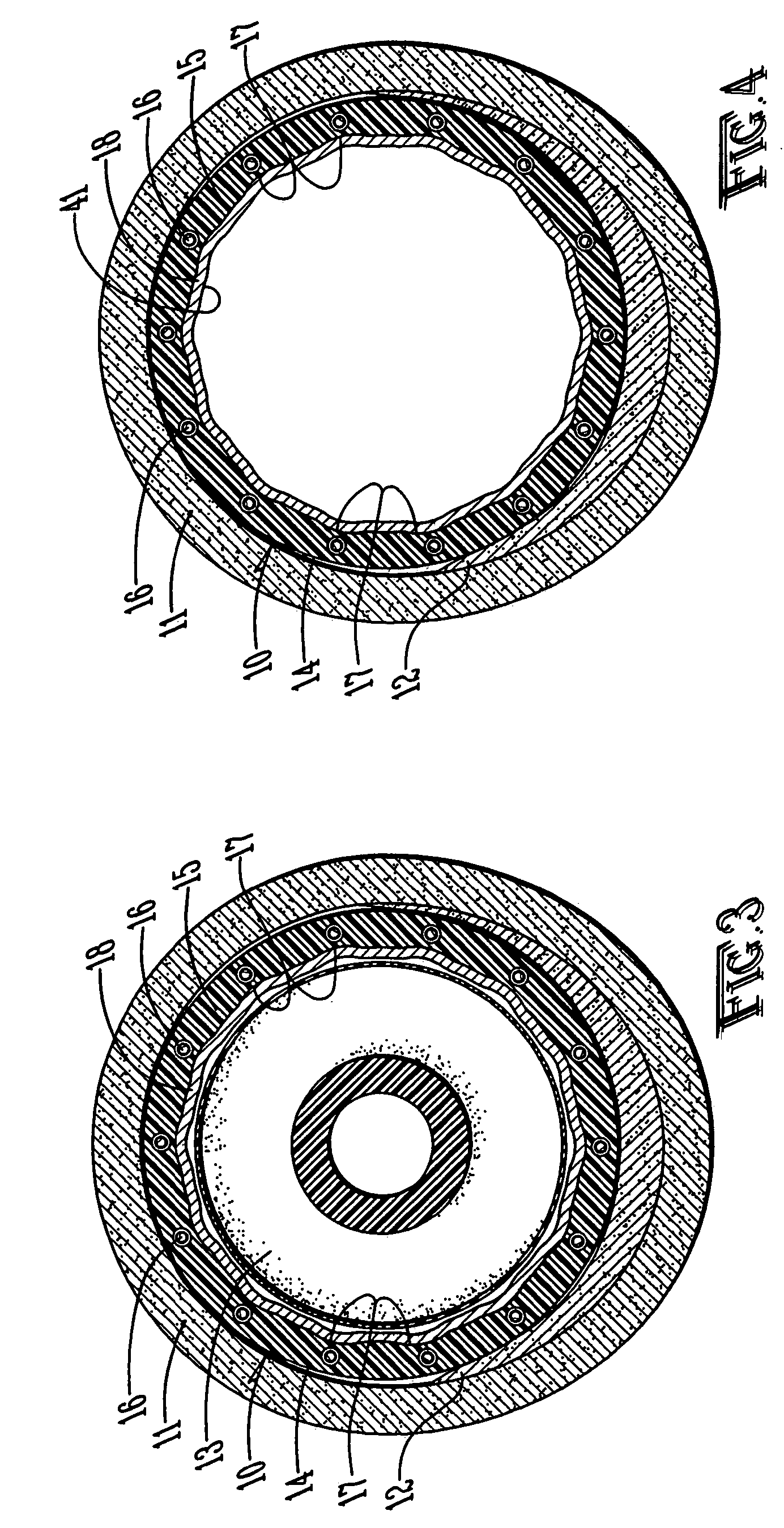Encased stent
a stent and stent technology, applied in the field of vascular stents, can solve the problems of reducing effectiveness, toxic and leaching of nickel, and focusing on the approach that shows promise for the short-term delay of restenosis, so as to enhance the growth of endothelial cells, discourage restenosis, and discourage the effect of restenosis
- Summary
- Abstract
- Description
- Claims
- Application Information
AI Technical Summary
Benefits of technology
Problems solved by technology
Method used
Image
Examples
examples
Coating Process for Nitinol
[0086]There are three requirements for the successful coating of stents:[0087]1) Uniformity of coating to prevent corrosion of metals for a long period, often in excess of twenty years.[0088]2) Flexibility of coating to remain as an effective film over the NiTi wires during multiple contractions and expansions, not only during the placement of stents but also throughout the lifetime of the stents as the artery narrows and widens from the blood flow. This arterial degeneration is due to the pulsation of the artery from the blood flow continuously rubbing against the stent.[0089]3) Biocompatibility of the coating; while protecting the NiTi stent from corrosion, the coating material must not cause any cell damage, bacterial adherence, and adverse tissue reaction, undue allergic or foreign body reactions, and, most importantly, the coating should be effective in reducing the probability of restenosis.
[0090]While there are a number of methods available to coat ...
PUM
| Property | Measurement | Unit |
|---|---|---|
| Homogeneity | aaaaa | aaaaa |
Abstract
Description
Claims
Application Information
 Login to View More
Login to View More - R&D
- Intellectual Property
- Life Sciences
- Materials
- Tech Scout
- Unparalleled Data Quality
- Higher Quality Content
- 60% Fewer Hallucinations
Browse by: Latest US Patents, China's latest patents, Technical Efficacy Thesaurus, Application Domain, Technology Topic, Popular Technical Reports.
© 2025 PatSnap. All rights reserved.Legal|Privacy policy|Modern Slavery Act Transparency Statement|Sitemap|About US| Contact US: help@patsnap.com



